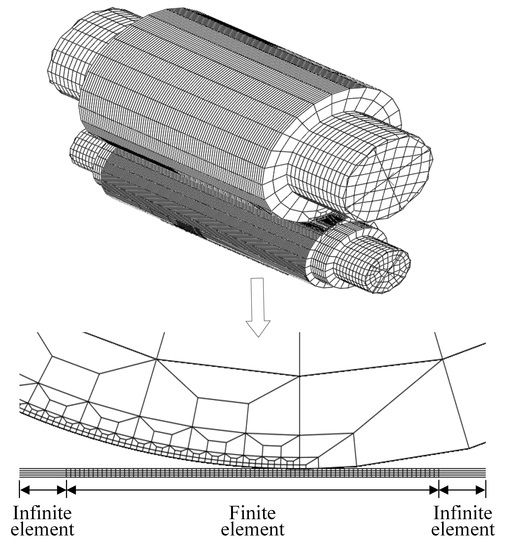Effect of Internal Stress of Incoming Strip on Hot Rolling Deformation Based on Finite Element and Infinite Element Coupling Method
Abstract
:1. Introduction
2. Coupling Principle of the Finite Element and Infinite Element
- (1)
- Establish the equilibrium equations respectively for the near-field region and far-field region:where , are intermediate unknown variables; , are the interaction force between finite element and infinite element; and , are respectively the solution of the finite element region and infinite element region.
- (2)
- Obtain the displacement expression for finite element and infinite element on the interface:
- (3)
- Establish the continuous equations for the interface:
- (4)
- , are calculated by simultaneously solving the above equations, and then backward substituted to obtain the displacement and stress of the nodes.
3. Application of the Finite Element and Infinite Element (FE-IE) Coupling Method in Rolling Simulation
3.1. Static Stress Field Model Based on FE-IE Coupling Method
3.2. Modified Rolls-Strip Coupling Model Based on FE-IE Coupling Method
3.3. Typical Distribution Forms of Internal Stress
4. Results and Discussion
4.1. Effect of Distribution Forms of Internal Stress on the Total Roll Force
4.2. Effect of Uniform Stress on Roll Gap Profile
4.3. Effect of Symmetric Stress on the Roll Gap Profile
4.4. Effect of Asymmetric Stress on Roll Gap Profile
4.5. Efficacy Coefficients of Quadratic Wave Stress on the Central Thickness and Quadratic Crown
5. Conclusions
- (1)
- It is original to introduce the infinite element into the traditional finite element rolling model and this provides a new method to simulate the hot rolling deformation of a nearly infinite-length strip with complex internal stress.
- (2)
- Due to the average effect, the various distribution forms of the internal stress only change the distribution of the rolling force, but have little effect on the total roll force.
- (3)
- The strip profile is closely related to the distribution form of internal stress. Compared to the case of no stress, the central thickness and quadratic crown are decreased when uniform stress or double-edge wave stress is applied to the strip. The middle wave stress has an opposite effect on these two indicators. The quartic wave stress has little influence on the quadratic crown, but has a great effect on the quartic crown. The single-edge wave stress has little effect on the quadratic crown and the quartic crown, but increases the wedge.
- (4)
- The central thickness and quadratic crown of the strip vary almost linearly with the amplitude of the quadratic wave stress deviation, and the efficacy coefficients of the middle wave stress and the edge wave stress on the central thickness and quadratic crown are obtained, respectively.
Acknowledgments
Author Contributions
Conflicts of Interest
References
- Li, H.J.; Xu, J.Z.; Wang, G.D.; Shi, L.J.; Xiao, Y. Development of strip flatness and crown control model for hot strip mills. J. Iron Steel Res. Int. 2010, 17, 21–27. [Google Scholar] [CrossRef]
- Kpogan, K.; Tampango, Y.; Zahrouni, H.; Potier-Ferry, M.; Ben-Dhia, H. Computing flatness defects in sheet rolling by Arlequin and Asymptotic numerical methods. Key Eng. Mater. 2014, 611, 186–193. [Google Scholar] [CrossRef]
- Fukushima, S.; Washikita, Y.; Sasaki, T.; Nakagawa, S.; Buei, Y.; Yakita, Y.; Yanagimoto, J. Mixed Scheduled Rolling of High Tensile Strength and Mild Steel Using a High-accuracy Profile Model in Hot Strip Finishing Mill. Tetsu Hagane 2014, 100, 1499–1507. [Google Scholar] [CrossRef]
- Xu, J.Z.; Gong, D.Y.; Zhang, W.C.; Chang, X.W.; Liu, X.H.; Wang, G.D. Model building of the initial crown effect rate in 4-high mill. J. Mater. Sci. Technol. 2005, 21, 165–169. [Google Scholar]
- Hu, Y.; Gong, D.Y.; Jiang, Z.Y.; Xu, J.Z.; Zhang, D.H.; Liu, X.H. Effect of initial crown on shape of hot rolled strip. J. Iron Steel Res. Int. 2009, 16, 32–34. [Google Scholar] [CrossRef]
- Aoh, J.N.; Hsu, H.K.; Dai, W.T.; Lin, C.Y.; Yeh, Y.L. Numerical simulation on correcting camber and wedge of steel slabs in hot rolling mill. Key Eng. Mater. 2014, 626, 570–575. [Google Scholar] [CrossRef]
- Abdelkhalek, S.; Montmitonnet, P.; Legrand, N.; Buessler, P. Coupled approach for flatness prediction in cold rolling of thin strip. Int. J. Mech. Sci. 2011, 53, 661–675. [Google Scholar] [CrossRef]
- Nakhoul, R.; Montmitonnet, P.; Legrand, N. Manifested flatness defect prediction in cold rolling of thin strips. Int. J. Mater. Form. 2015, 8, 283–292. [Google Scholar] [CrossRef] [Green Version]
- Wang, T.; Xiao, H.; Zhao, T.Y.; Qi, X.D. Improvement of 3-D FEM coupled model on strip crown in hot rolling. J. Iron Steel Res. Int. 2012, 19, 14–19. [Google Scholar] [CrossRef]
- Xu, H.B.; Ding, S.R.; Huo, Y.Z. Coupled thermo-mechanical FEM simulation of multi-pass vertical-horizontal rolling process. Adv. Mater. Res. 2014, 941, 1726–1734. [Google Scholar] [CrossRef]
- Jiang, Z.Y.; Hu, W.P.; Zhang, X.M.; Liu, X.H.; Wang, G.D. Coupled deformation and temperature analysis of strip rolling with a local perturbation of deformation using a 3D rigid-plastic FEM. Scand. J. Metall. 2004, 33, 29–38. [Google Scholar] [CrossRef]
- Jiang, Z.Y.; Xiong, S.W.; Tieu, A.K.; Wang, Q.J. Modeling of the effect of friction on cold strip rolling. J. Mater. Process. Technol. 2008, 201, 85–90. [Google Scholar] [CrossRef]
- Knops, P.J.; Payne, L.E. A Saint-Venant principle for nonlinear elasticity. Arch. Ration. Mech. Anal. 1983, 81, 1–12. [Google Scholar] [CrossRef]
- Seo, C.G.; Yun, C.B.; Kim, J.M. Three-dimensional frequency-dependent infinite elements for soil-structure interaction. Eng. Struct. 2007, 29, 3106–3120. [Google Scholar] [CrossRef]
- Yun, C.B.; Kim, D.B.; Kim, J.M. Analytical frequency-dependent infinite elements for soil-structure interaction analysis in two-dimensional medium. Eng. Struct. 2000, 22, 258–271. [Google Scholar] [CrossRef]
- Zhang, C.H.; Zhao, C.B. Coupling method of finite and infinite elements for strip foundation wave problems. Earthq. Eng. Struc. 1987, 15, 839–851. [Google Scholar]

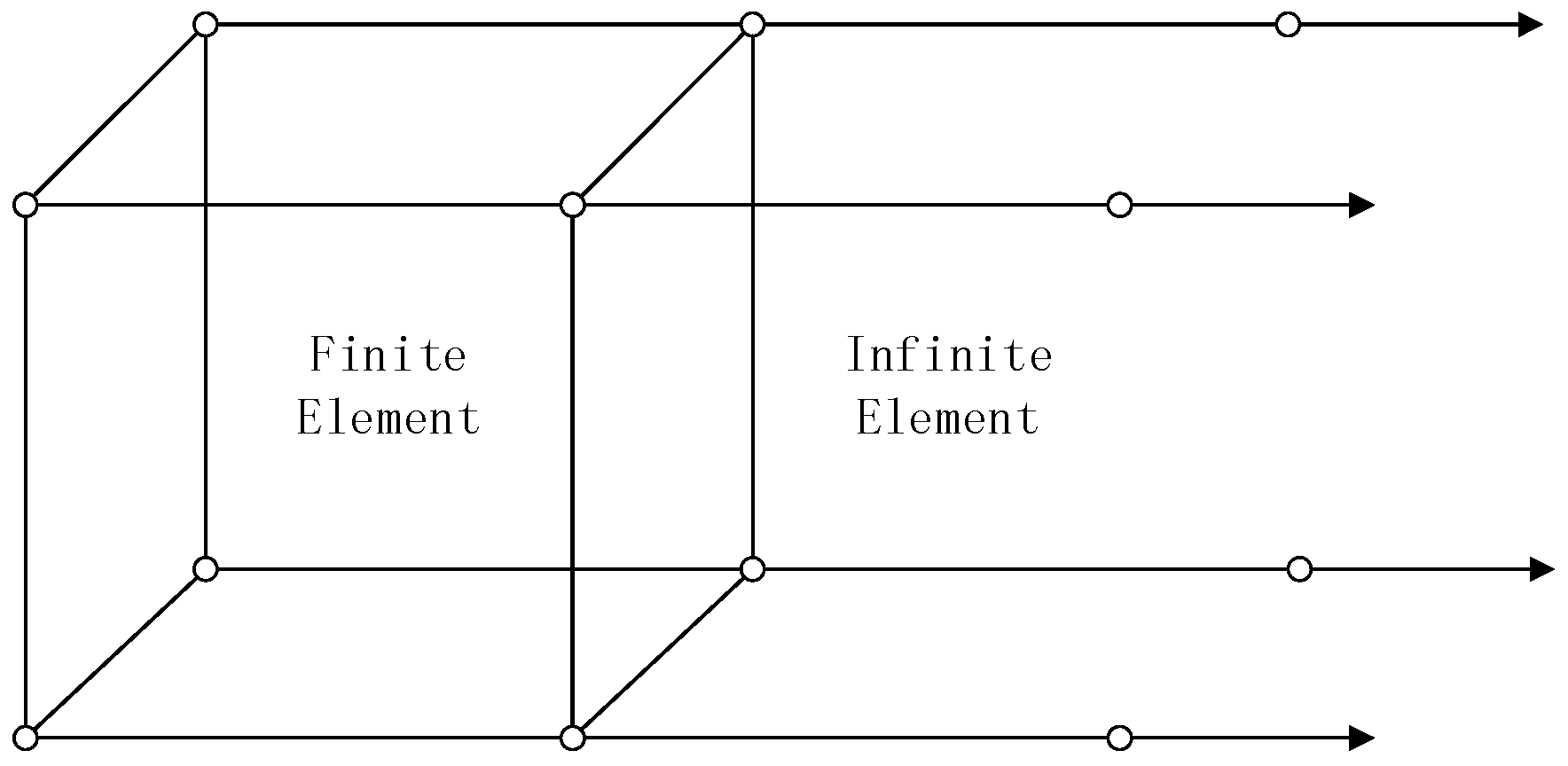

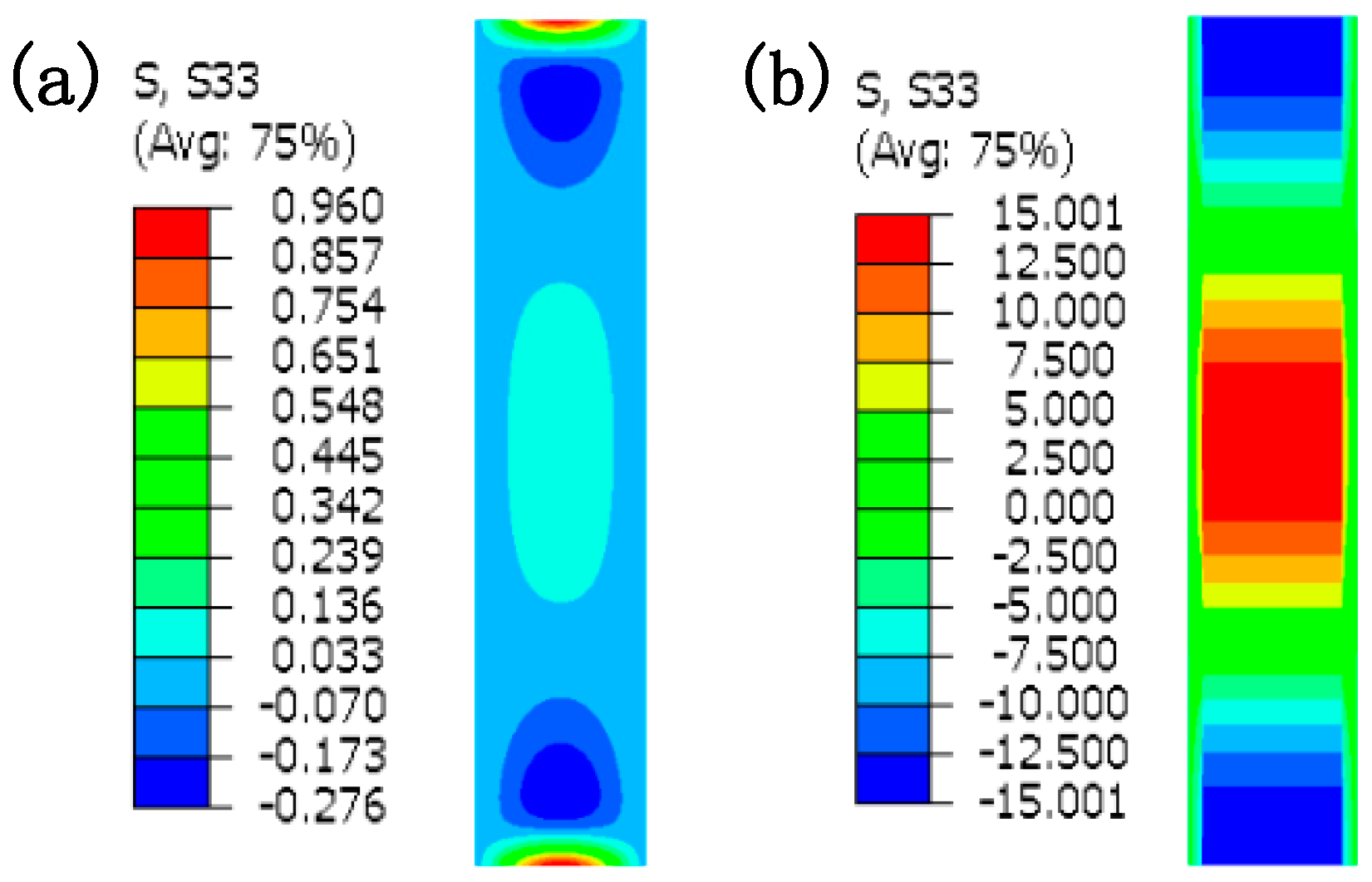


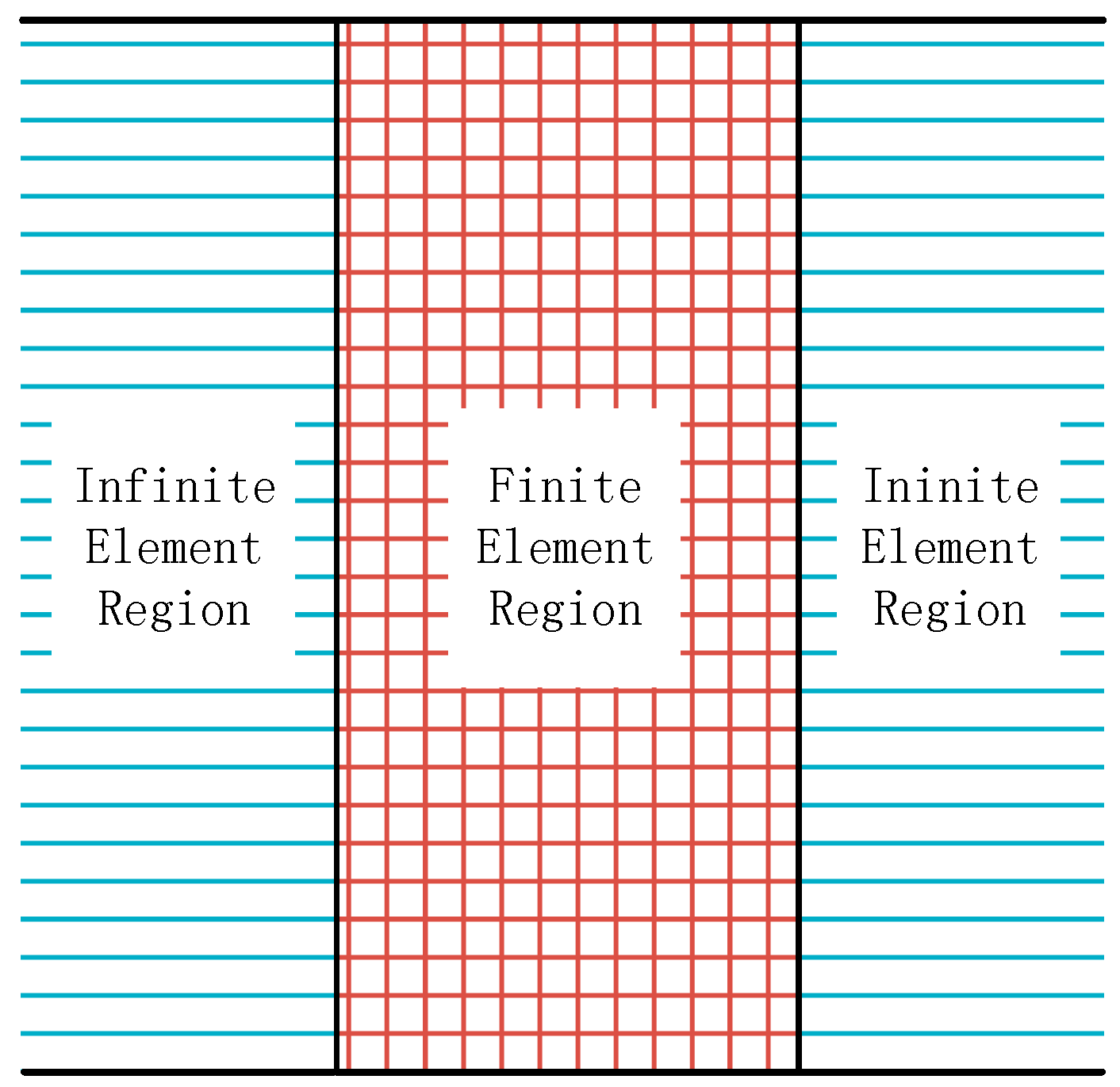
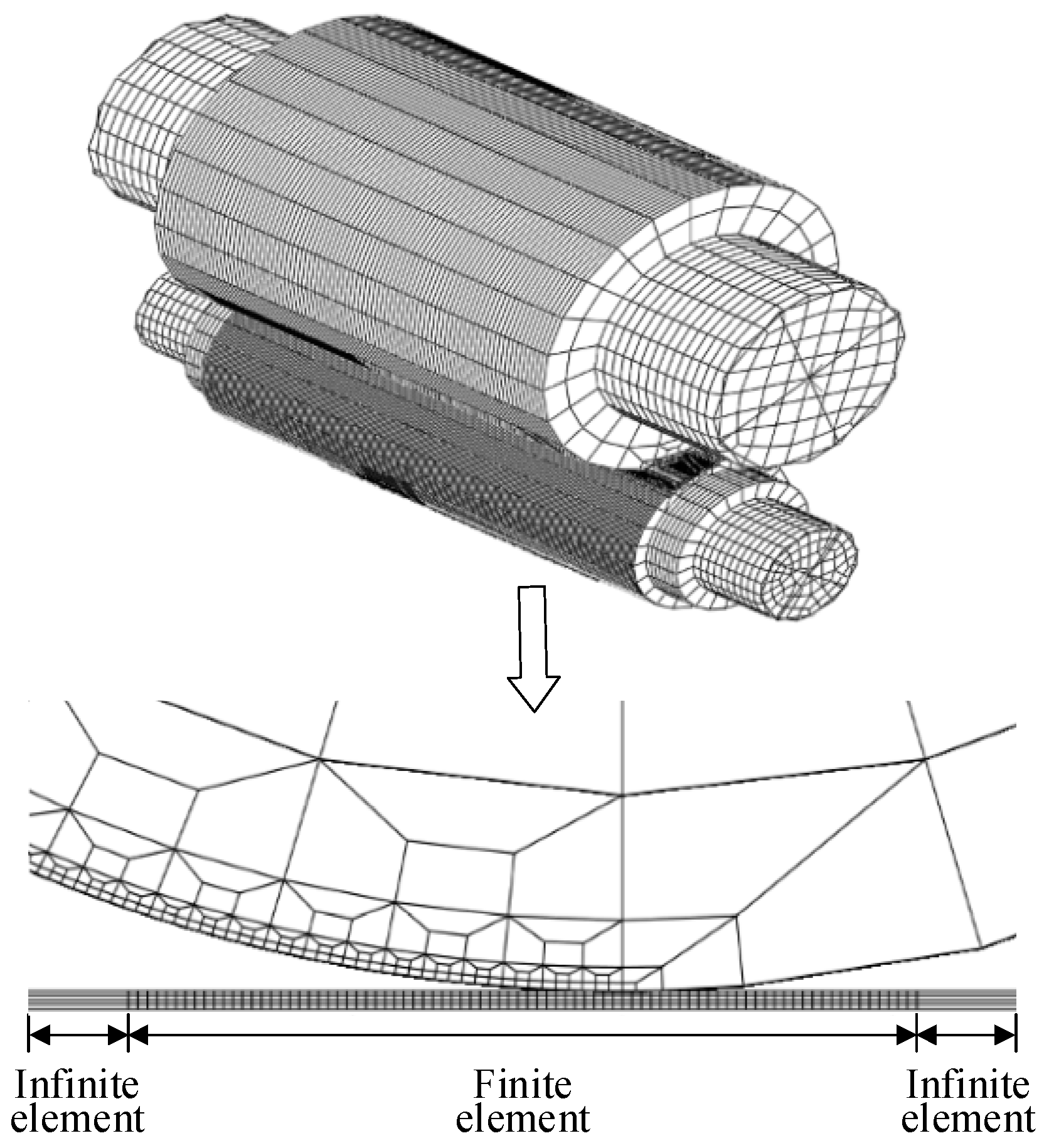
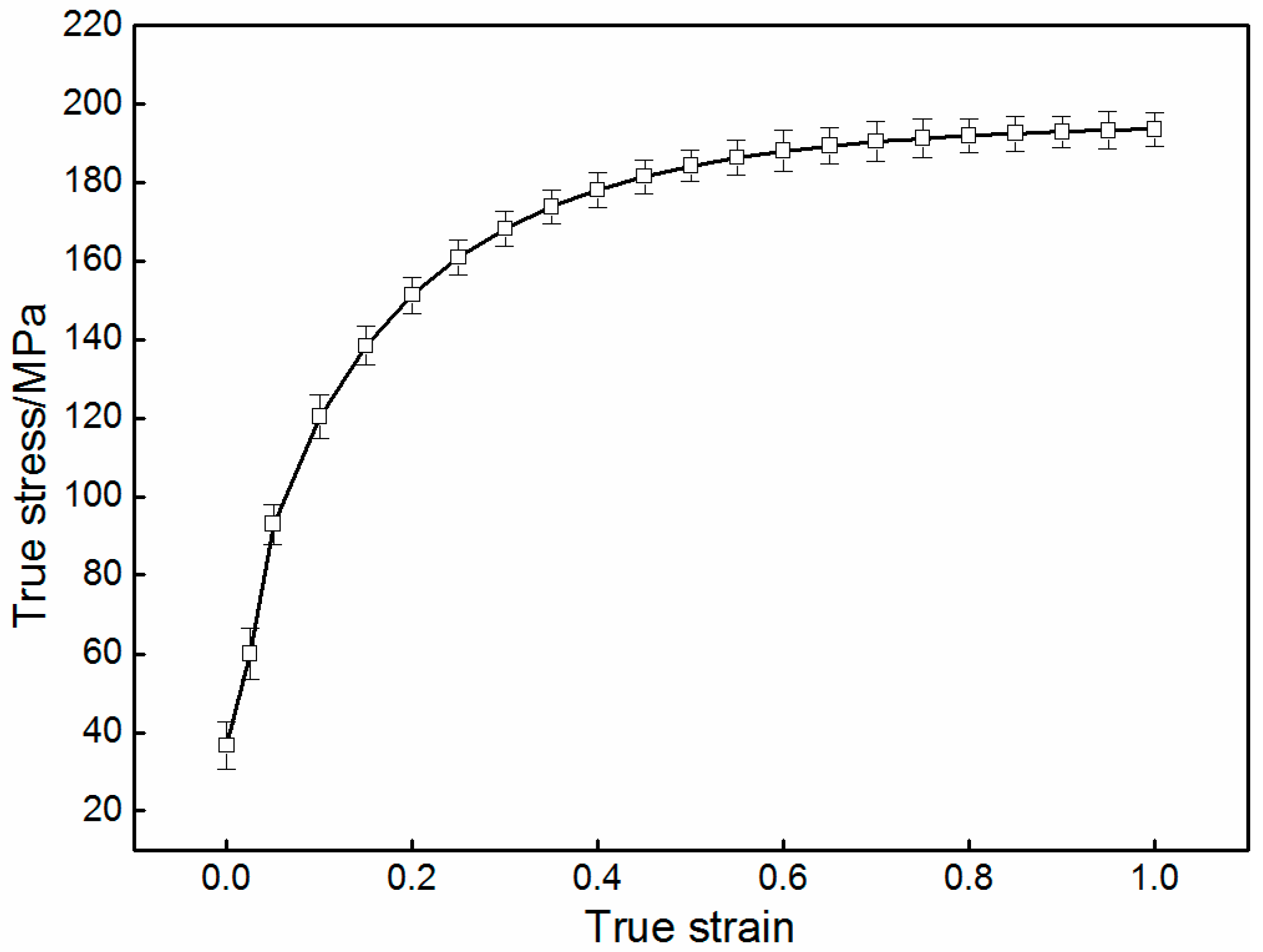
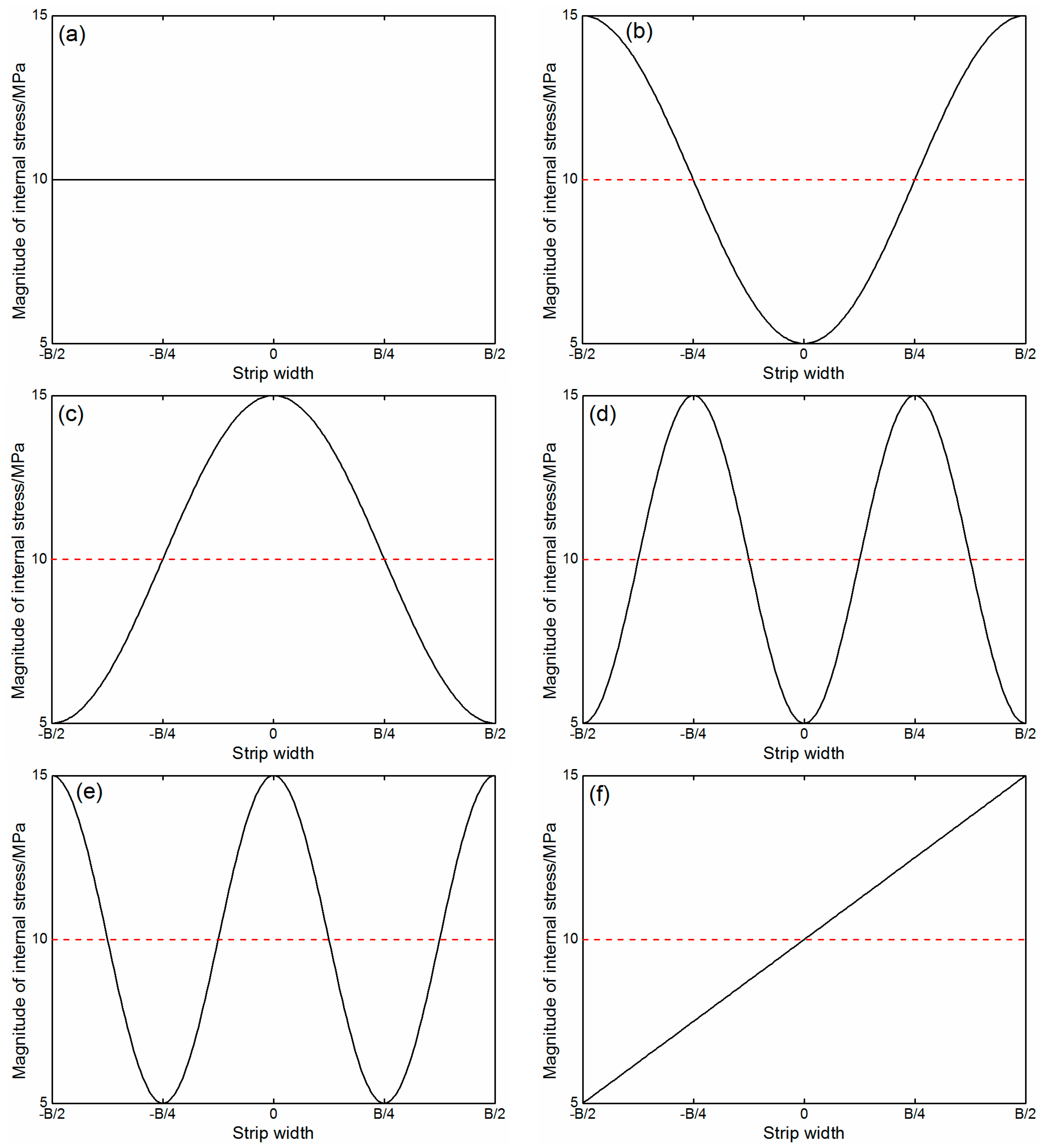
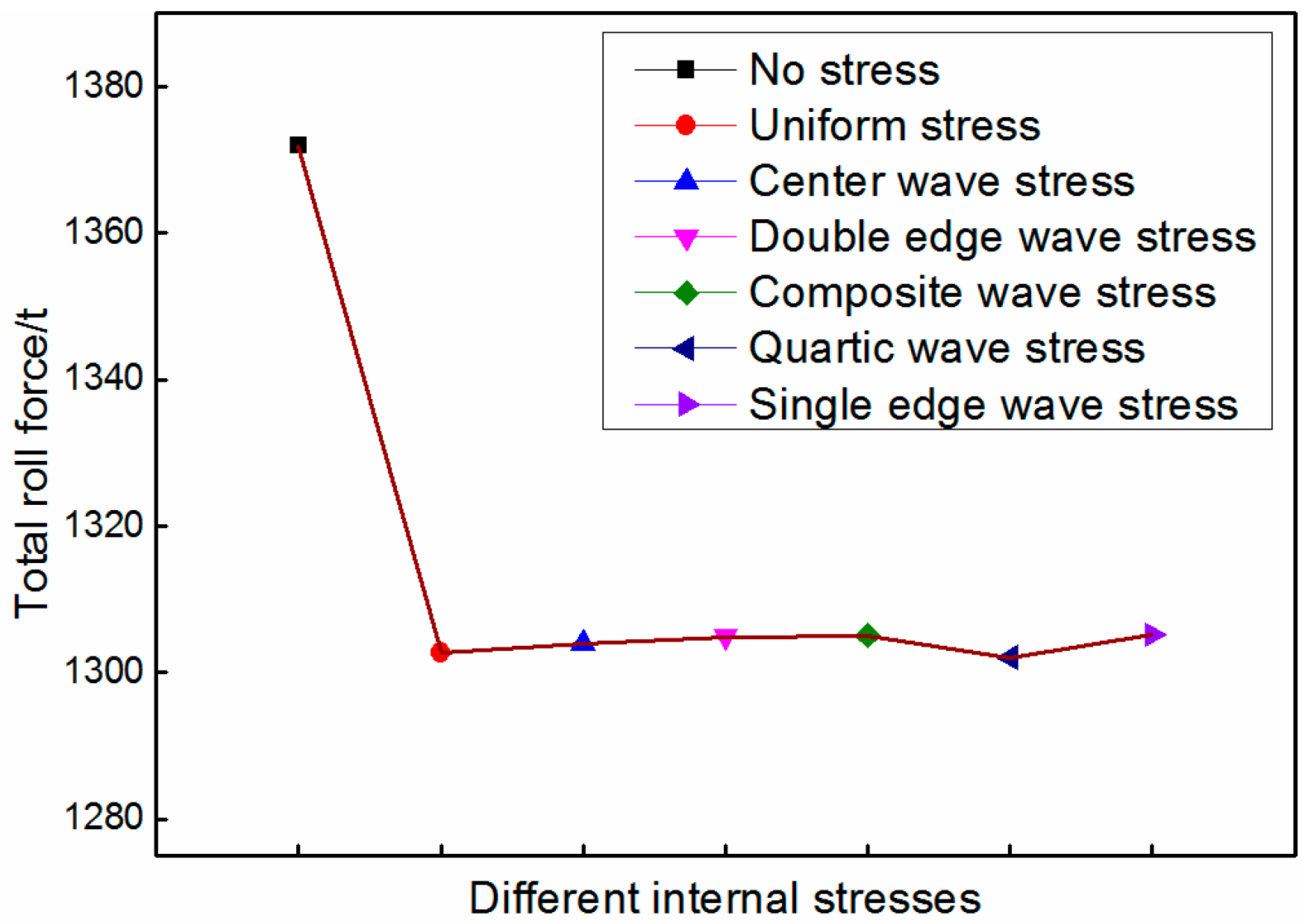
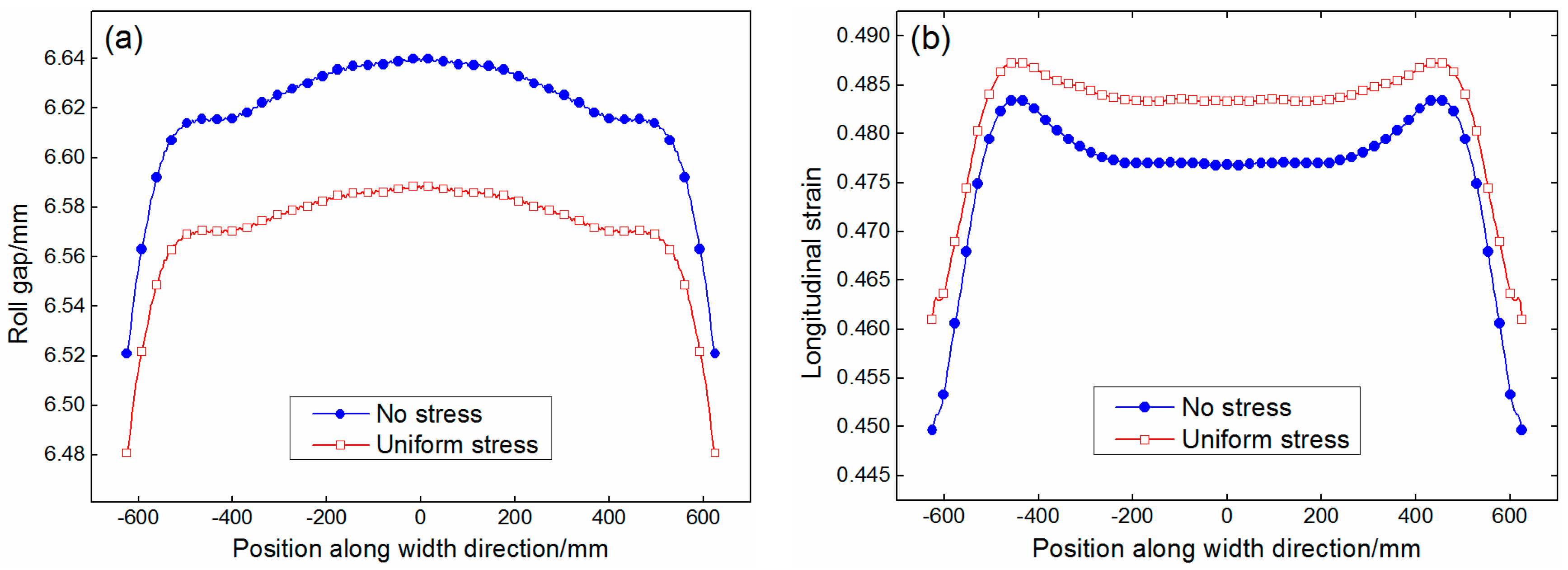
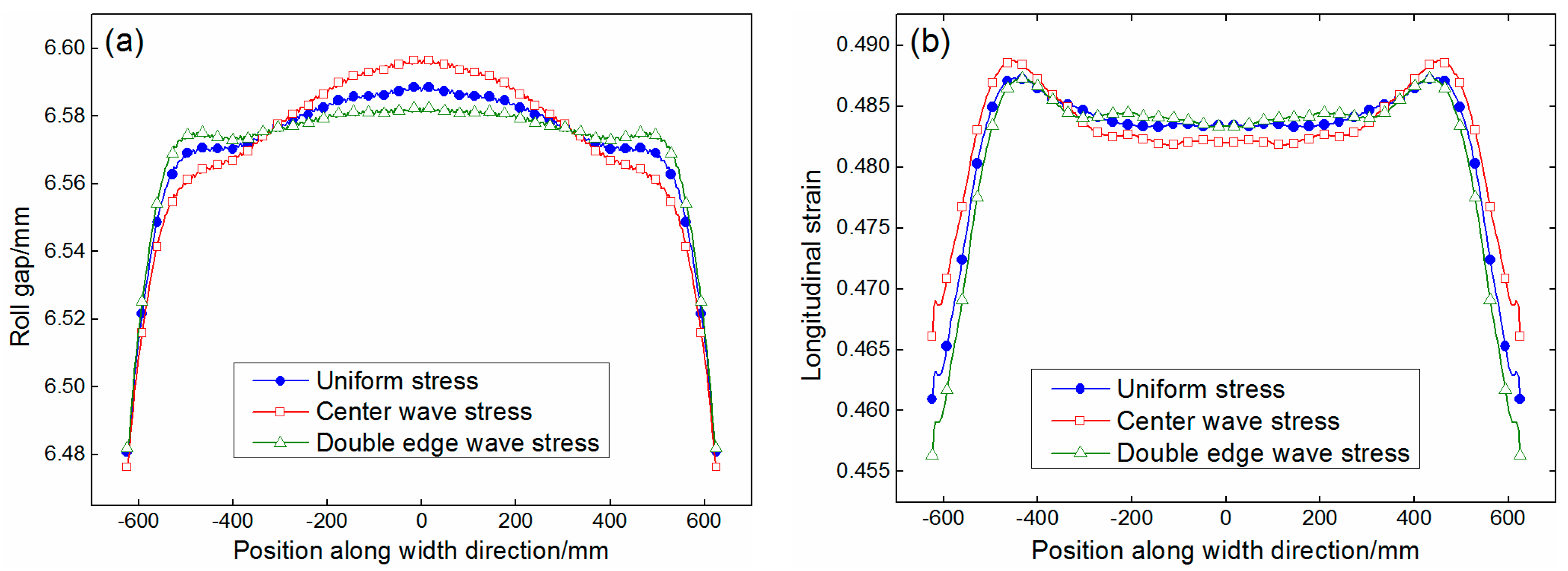
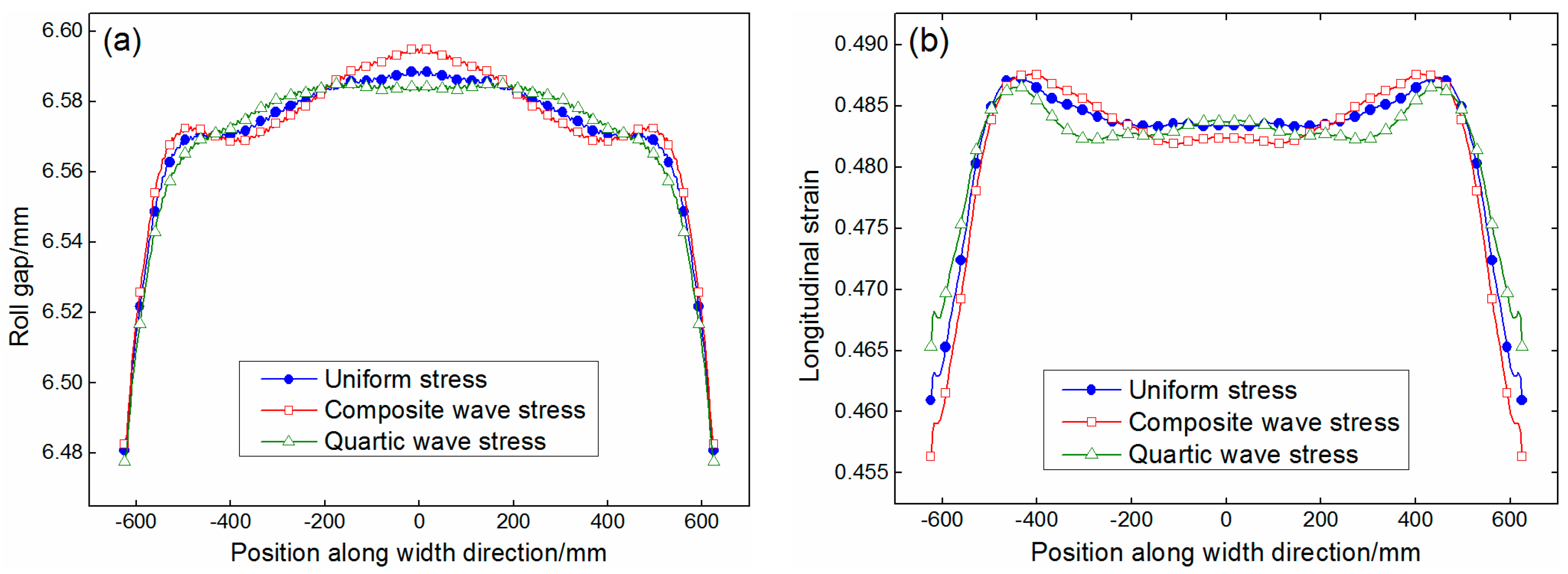
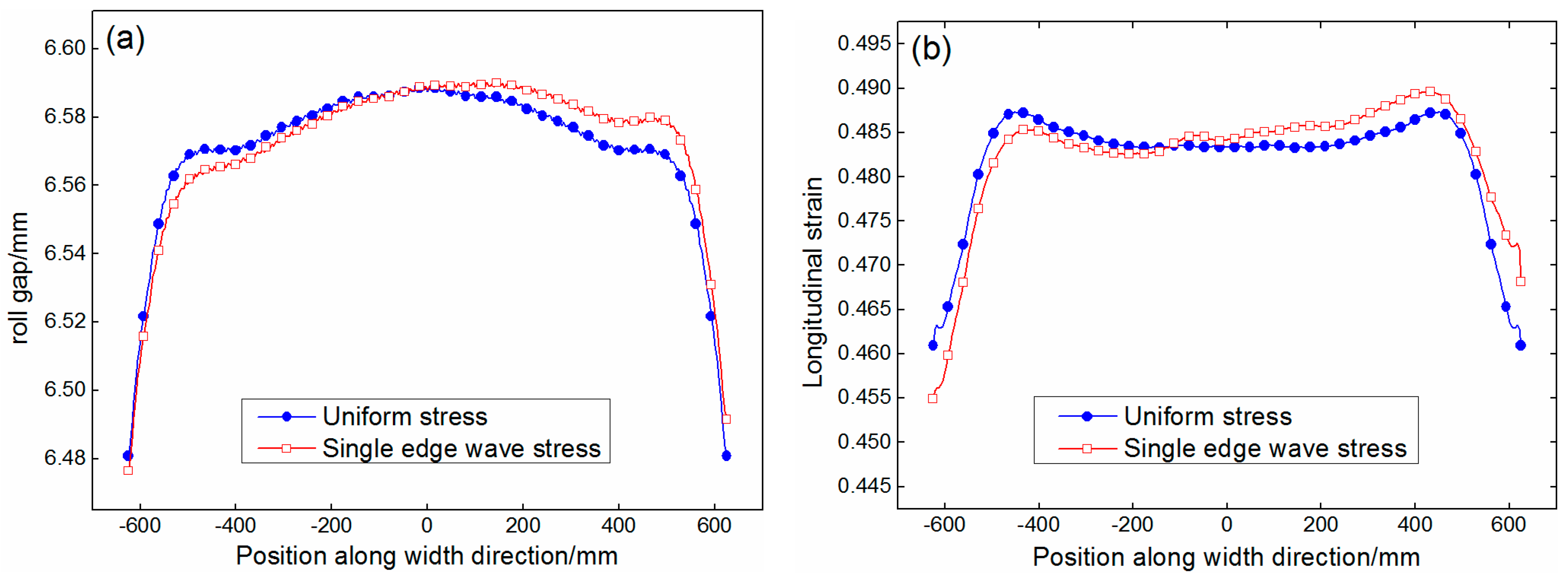
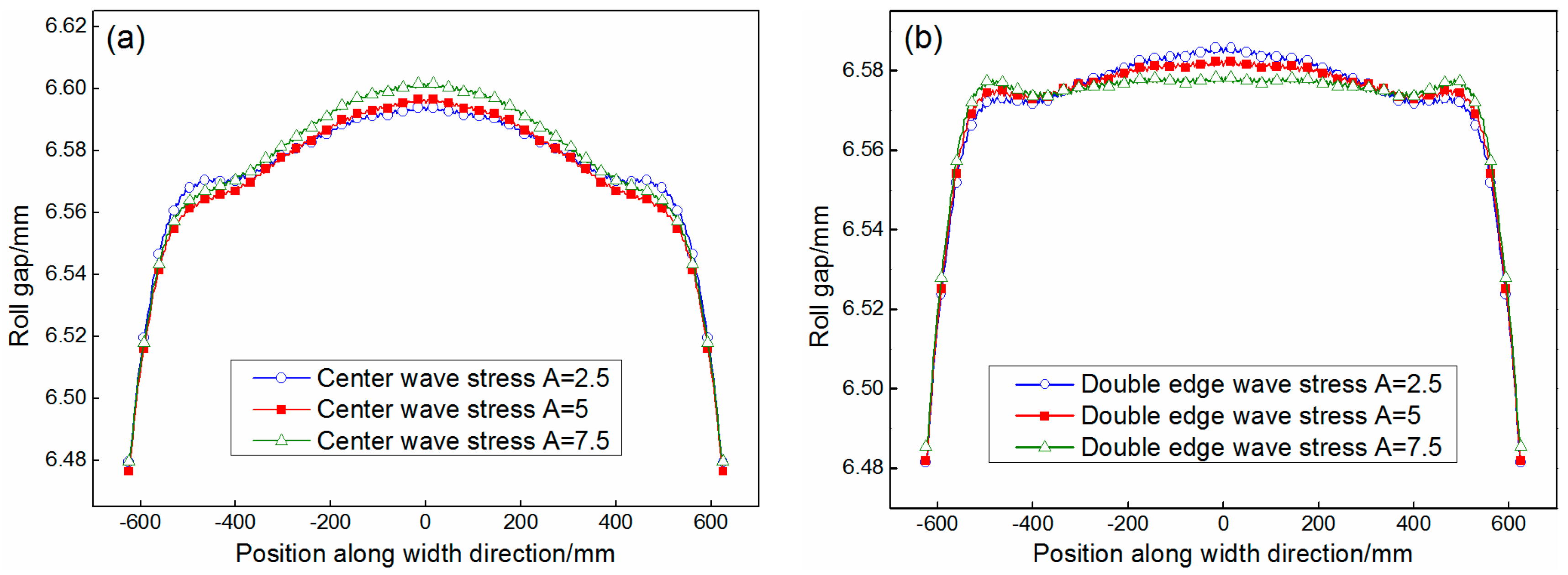

| Type of Mill | 4-High |
|---|---|
| Strip width/mm | 1250 |
| Entry strip thickness/mm | 10.66 |
| Exit strip thickness/mm | 6.6 |
| Body diameter of WR/BUR/mm | 730/1372 |
| Body length of WR/BUR/mm | 2000/1800 |
| Bending force/kN | 1200 |
| Looper tension/MPa | 8–12 |
| Friction coefficient between rolls | 0.1 |
| Friction coefficient between roll and strip | 0.1 |
© 2018 by the authors. Licensee MDPI, Basel, Switzerland. This article is an open access article distributed under the terms and conditions of the Creative Commons Attribution (CC BY) license (http://creativecommons.org/licenses/by/4.0/).
Share and Cite
Liu, C.; He, A.; Qiang, Y.; Guo, D.; Shao, J. Effect of Internal Stress of Incoming Strip on Hot Rolling Deformation Based on Finite Element and Infinite Element Coupling Method. Metals 2018, 8, 92. https://doi.org/10.3390/met8020092
Liu C, He A, Qiang Y, Guo D, Shao J. Effect of Internal Stress of Incoming Strip on Hot Rolling Deformation Based on Finite Element and Infinite Element Coupling Method. Metals. 2018; 8(2):92. https://doi.org/10.3390/met8020092
Chicago/Turabian StyleLiu, Chao, Anrui He, Yi Qiang, Defu Guo, and Jian Shao. 2018. "Effect of Internal Stress of Incoming Strip on Hot Rolling Deformation Based on Finite Element and Infinite Element Coupling Method" Metals 8, no. 2: 92. https://doi.org/10.3390/met8020092



